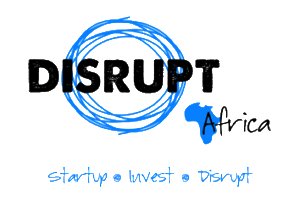As the crypto market recalibrates in April 2025, three major players are capturing investor attention—Ethereum, Tether, and a surging newcomer, BlockDAG. Ethereum’s price is holding steady, offering a temporary breather after a difficult Q1. Meanwhile, Tether is making bold strategic moves with its newly announced blockchain-based U.S. payment network. But it’s BlockDAG that’s dominating long-term investment conversations, having raised an astounding $212.5 million in its presale while delivering on real network development with a live Beta Testnet and performance benchmarks that rival the biggest Layer-1s.

Ethereum Stabilizes as On-Chain Activity Slows
After a volatile start to 2025, Ethereum (ETH) is showing signs of price stability, holding around the $1,850 mark. While ETH had suffered a 45% drop in Q1—the worst first-quarter performance since 2022—the recent consolidation is seen as a signal that large investors, or “whales,” are reaccumulating. According to MiTrade, several addresses holding 10,000 to 100,000 ETH have increased their holdings, particularly after Ethereum dipped below the $1,800 level.
Yet, this stability masks deeper concerns. Ethereum’s gas fees have fallen to their lowest point since 2020. While lower fees typically imply improved efficiency, in this case, they result from a sharp decline in network usage. Ethereum’s daily fee revenue has dropped below $5 million, a level not seen in over four years. Analysts point to the success of Layer-2 rollups like Base and the Dencun upgrade as reasons behind this drop, as many users are now transacting off the Ethereum main chain.
![]()
Tether Expands Its Vision Beyond Stablecoins
In parallel, Tether—the issuer of the world’s largest stablecoin, USDT—is making strategic moves to establish itself beyond just digital dollar settlements. According to Axios, the company is working on building a new blockchain-based payment network for U.S. consumers. Tether’s CEO, Paolo Ardoino, described this as a shift in positioning: globally, users rely on USDT as a savings tool, but in the U.S., the goal is to make it function more like a checking account.
This push comes as Tether prepares to compete with Circle, whose USDC stablecoin is becoming increasingly compliant with U.S. regulations and is rumored to be heading toward an IPO. Meanwhile, U.S. lawmakers are expected to introduce stablecoin legislation this year, which would further shape the regulatory landscape Tether hopes to operate in.

BlockDAG’s $212.5M Presale Proves It’s the Long-Term Crypto to Watch
While Ethereum holds ground and Tether experiments with new payment models, BlockDAG continues to be the breakout performer of 2025. Its presale has officially crossed $212.5 million, all without a single dollar from VCs. This figure not only validates investor confidence in its architecture, but also places it as one of the most successful crypto fundraising efforts in recent history.
BlockDAG’s core value proposition is its hybrid architecture—combining Proof-of-Work (PoW) with Directed Acyclic Graph (DAG) mechanics. In the words of CTO Jeremy Harkness during Keynote 3:
“Our hybrid consensus mechanism combines the best of two worlds: the security and proven robustness of Proof-of-Work with the flexibility and speed of a Directed Acyclic Graph. This isn’t your traditional blockchain—we’re literally rewriting the rules.”
This design allows multiple blocks to be confirmed simultaneously, eliminating the bottlenecks faced by chains like Ethereum. While ETH is still focused on sharding and Layer-2 rollups, BlockDAG is aiming for 2,000 TPS at mainnet, scaling to 15,000 TPS over the next 24 months.
BlockDAG’s testnet is now live and fully active. Over 110,000 wallets have already received 10,000 BDAG test tokens each, and more than a million transactions are expected to run through the Beta environment before mainnet. But what’s really setting the community on fire is the $60,000 rewards campaign.

The top 10 most active wallets, top 10 miners, and top 10 largest testnet balances will each receive $2,000 worth of BDAG tokens (at $0.05 launch price). All of this is designed not only to stress-test the blockchain, but also to introduce the vesting contract, miner engagement, and UI flows ahead of the launch.
CEO Antony Turner made this crystal clear during Keynote 3:
“This isn’t just capital—it’s fuel for innovation, expansion, and the next evolution of blockchain technology.”
Meanwhile, developer onboarding is in full swing. The newly launched BlockDAG Academy is already offering three-tiered blockchain education. Grants, hackathons, and an Ambassador Program are now live. According to Head of Developer Ecosystem Steven Clarke-Martin:
“Whether you’re an experienced blockchain developer or just getting started, these initiatives will support your journey.”
With testnet tools like the token and NFT creation wizard, IDE, and updated explorer now live, BlockDAG is not just talking about future adoption—it’s simulating it now, in real-time.
Final Word:
Ethereum and Tether may be the headlines of today, but BlockDAG is building what tomorrow looks like. With a presale now exceeding $212.5M, live testnet activity, developer support programs, and confirmed mainnet scalability goals, BlockDAG is delivering real progress—not just promises.
In a market that often rewards speculation over substance, BlockDAG is flipping the narrative. This is no longer just one of the top-performing presales—it’s positioning itself as one of the best long-term crypto investments of the decade.
![]()
Presale: https://purchase.blockdag.network
Website: https://blockdag.network
Telegram: https://t.me/blockDAGnetworkOfficial
Discord: https://discord.gg/Q7BxghMVyu


